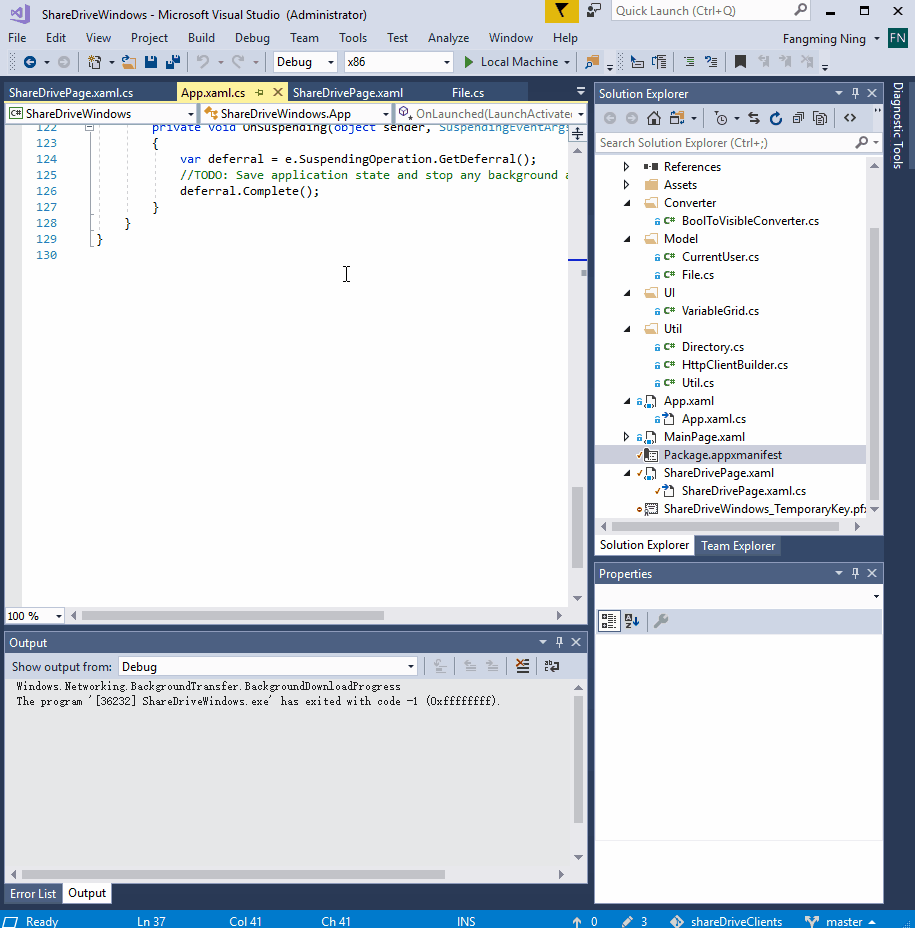Windows 10 Universal App File/Directory Access
The accepted answer is no longer complete. It is now possible to declare broadFileSystemAccess in the app manifest to arbitrarily read the file system.
The File Access Permissions page has details.
Note that the user can still revoke this permission via the settings app.
In UWP apps, you can only access the following files and folders:
- Directories which are declared in the manifest file (e.g. Documents, Pictures, Videos folder)
- Directories and files which the user manually selected with the FileOpenPicker or FolderPicker
- Files from the FutureAccessList or MostRecentlyUsedList
- Files which are opened with a file extension association or via sharing
If you need access to all files in D:\, the user must manually pick the D:\ drive using the FolderPicker, then you have access to everything in this drive...
UPDATE:
Windows 10 build 17134 (2018 April Update, version 1803) added additional file system access capabilities for UWP apps:
Any UWP app (either a regular windowed app or a console app) that declares an
AppExecutionAliasis now granted implicit access to the files and folders in the current working directory and downward, when it’s activated from a command line. The current working directory is from whatever file-system location the user chooses to execute your AppExecutionAlias.The new
broadFileSystemAccesscapability grants apps the same access to the file system as the user who is currently running the app without file-picker style prompts. This access can be set in the manifest in the following manner:
xmlns:rescap="http://schemas.microsoft.com/appx/manifest/foundation/windows10/restrictedcapabilities"
...
IgnorableNamespaces="uap mp uap5 rescap">
...
<Capabilities>
<rescap:Capability Name="broadFileSystemAccess" />
</Capabilities>
These changes and their intention are discussed at length in the MSDN Magazine article titled Universal Windows Platform - Closing UWP-Win32 Gaps. The articles notes the following:
If you declare any restricted capability, this triggers additional scrutiny at the time you submit your package to the Store for publication. ... You don’t need an
AppExecutionAliasif you have this capability. Because this is such a powerful feature, Microsoft will grant the capability only if the app developer provides compelling reasons for the request, a description of how this will be used, and an explanation of how this benefits the user.
further:
If you declare the
broadFileSystemAccesscapability, you don’t need to declare any of the more narrowly scoped file-system capabilities (Documents, Pictures or Videos); indeed, an app must not declare bothbroadFileSystemAccessand any of the other three file-system capabilities.
finally:
Even after the app has been granted the capability, there’s also a runtime check, because this constitutes a privacy concern for the user. Just like other privacy issues, the app will trigger a user-consent prompt on first use. If the user chooses to deny permission, the app must be resilient to this.
You can do it from UI in VS 2017.
Click on manifest file -> Capabilities -> Check photo library or whatever stuff you want.
